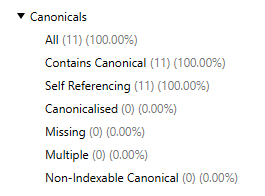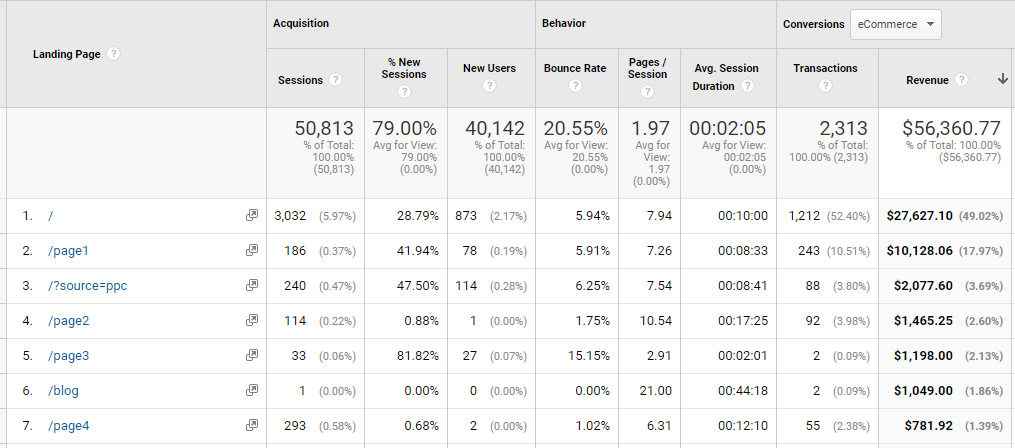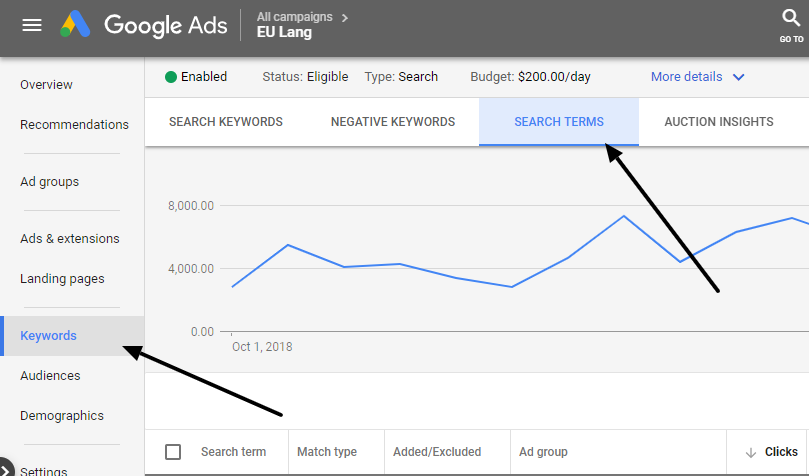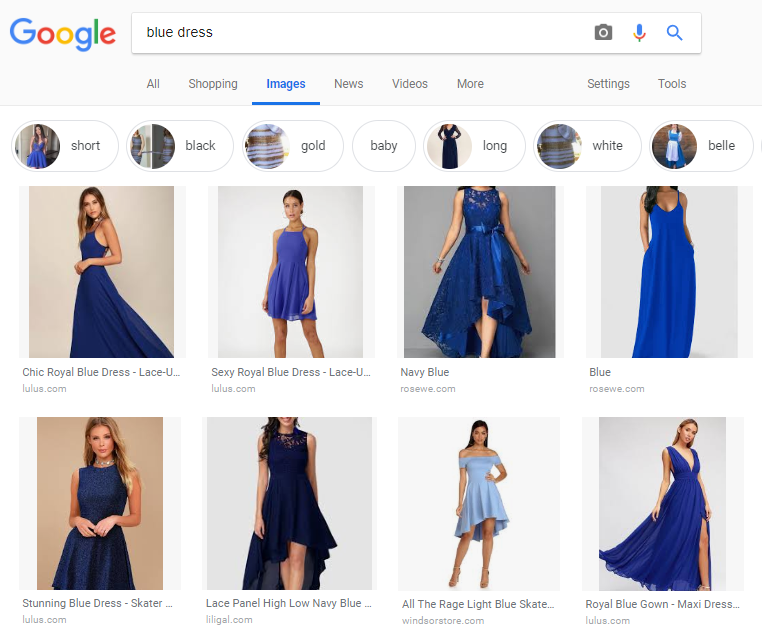



One of the great things about the Internet is how it’s made up of everything, from encyclopedia articles to groceries, to shopping for obscure collectibles, and easily accessible with a few clicks. The rise of the Internet has paved the way for e-commerce and this, in turn, has attracted many entrepreneurs to start their own online store.
Running an e-commerce store can be a very lucrative business, but don’t think money will start pouring down from the sky. First, customers will need to find your online store. Here are 22 SEO tactics you can use to attract more customers to your store:
Category pages aren’t there just for easier navigation. To make them truly work for you, you need to optimize them for the most highly searched keywords your customers are using. With a solid keyword strategy, your category pages can be your top trafficked pages.
In addition to being good for SEO, this is great for UX. By matching your categories to your top keywords, you match your categories to the words your customers are using. That makes it easier for customers to navigate your website.


Links are an important part of Google’s algorithm…but it can be hard to get links to product pages – most websites don’t want to link to your promotional pages. How can you make your product pages more compelling and linkable? Start by make your product page content more unique, thorough, and attractive. Here are a few ideas:
Once users find your SERP listing, will they want to click on it? If you want to maximize visitors to your site, you need to make your offer so compelling that they won’t be able to resist. For instance, instead of something like this:
Laptops | JUMIA Store
Try something like this:
“48% Off Laptops by Dell, HP, & Lenovo | JUMIA Store”
Which would you rather click on? Highlighting recognizable brands and price savings in your page title like this can drive a higher click-through rate, which means you get more shoppers on your site!
You want Google to index the right URL for your content, and you don’t want your “ranking power” diluted between multiple URLs for the same content. Unfortunately, e-commerce websites are often plagued with duplicate content issues – sorting, filtering, and other features tend to create extra URLs. This is where canonical tags come in – they ensure that only the right content is getting indexed.
Here are a few tips to ensure that your canonical tags are set up correctly:


An SEO crawl tool can help you spot any issues with your canonical tags.
Google Analytics’ landing page report is something that every online store owner should be very familiar with. Especially since Google blocked keyword data for organic search traffic. Here are a few things you can learn from the landing page report:


You can never have too many keyword ideas. But what you really need are keyword ideas that you are 100% confident will drive revenue. This is when you need to turn to Google Ads for some extra keywords.

Here’s how:
If you’re doing search marketing, you’re probably at least using Google’s free Keyword Planner to identify keywords to target. E-commerce store owners can go a step further and use a more powerful keyword research tool such as KeywordTool.io, a handy free keyword research tool that lets you pull keywords from e-commerce-specific search data:

If you really want to maximize traffic to your online store, then you shouldn’t rely on just product and category keywords. There’s a whole world of keyword opportunities that many stores completely ignore. In fact, comparison and how-to keywords (more about them next) can in some cases bring even more traffic and revenue than simple “product name” keywords.
Why? Because these keywords let you target searchers in different stages of the buying journey, thereby expanding your target audience.
Much of what we said about comparison keywords holds true for how-to keywords as well, only this time you are targeting them more in their consideration stage. They know the problem but are still searching for options. For example, if you sell cooking spray you could target keywords like “how to keep potatoes from sticking to the skillet”. That lets you present your product to potential customers who are just starting to look for solutions.
Product variations can cause mayhem in your SEO, in particular with duplication, crawl inefficiencies, and cannibalization. To handle this problem, investigate the search volume for each possible product variation (for example, color) and if it has a high search volume, write unique content for it and separate it. For example “white iPhone” and “black iPhone” each have significant search volume, so you’ll probably want separate product pages for each (with unique content). Remember to update your canonical tags accordingly!
Use category pages to provide your potential consumers with relevant and useful information about your products. By making category pages rich with in-depth and engaging content, you’ll ensure user satisfaction and demonstrate topical relevancy to search engines.
Too often e-commerce sites fail to properly utilize their product descriptions to their fullest potential. Of course, how those descriptions should look depends largely on the online store and the product they’re selling. For some products, long copy works better while for others a short paragraph or two and some bullets work better. You need to find what works for your store. One tactic that’s almost always effective: a sub-headline that presents the key benefit or differentiator of the product.
It’s amazing how a single letter can make a world of difference. HTTP and HTTPS look pretty much the same, save for the extra “S”. But there are several important reasons to ensure that your entire website uses HTTPS:
Search engines such as Google, Bing, Yahoo, and Yandex pulled together to create Schema.org, a semantic vocabulary of microdata that you can add to your HTML and help search engines understand your content. There is schema markup for everything from local businesses, apps, book reviews to events.
For an e-commerce store, two in particular are especially important:
These help search engines better understand your products and display rich snippets that help your online store stand out in SERPs:


If you’re running a blog on the same sub-domain as your website, you’re already doing the right thing to boost your Google ratings. But you shouldn’t stop there. There’s plenty of evidence that long-form content will get you more than short-form content, including higher search results ranking, more shares on social media, more time spent by visitors on your site and so on. Publishing stand-out blog content is a great way to build an audience, authority, and search rankings for your store.
You’ll have a hard time selling any products if you don’t have images to accompany them. For products such as clothing, you can write the best description in the world but until the customer sees the product they’re not likely to buy it. Some customers even shop by using Google image search to find products they like. Once they click on an image of your product in the search, Google will give them a link to go directly to your website, so make sure to optimize your product images for Google image search.
Through proper image SEO practices, you can show up in “visual shopping search results” like this:


The typical internet user will only wait 2-3 seconds for a website to load. (You can argue that visitors today don’t have enough patience…you might be right, but that will get you nowhere. While you’re arguing, other online store owners are offering pages customers can open in a blink of an eye. Who do you think they’ll be happier with?)
To optimize your webpage load speed you may need to:


You can dig into each URL to see the connect time, time to first byte and load time of each URL, which is very helpful in identifying performance issues.
Roundups and ego-bait are both great ways to attract influencers and get them to talk about your content. Done well, this can be a win-win for you and the influencers. But you can’t just walk up to an influencer and ask them to endorse your content. First, you need to identify which influencers will be a good fit for your site. This part requires a bit of leg work to find experts that:
Once you do that, the next step is to pick a topic that works for both of you. This should be something that their audience will find appealing enough to engage with and perhaps link back to your content. The next step is to simply reach out to the influencer and ask them to contribute their perspective. Tell them why you’d like them to be part of the piece and that you’ll include a link to their website in the content.
Finally, don’t forget to follow up with a short, personalized email after the content is published. Thank them for their participation (and maybe ask them to share the published content).
Obviously, you can’t give everything away in your store for free, but hey, customers love free stuff, so why not give it to them from time to time? You’ll be pleasantly surprised at the benefits this will give you. A free offer can be a great loss-leader and/or a motivator for customers to promote your store for you! A well-done giveaway can drive social shares, backlinks, and referral traffic.
One advantage of owning a brick-and-mortar store used to have over owning an online store is that you can visually see how customers are behaving. You can observe them browsing specific items and help them in their decision. That used to be hard to do with an online store – but not so anymore.
You can use heatmap software to track where the user points on the screen with their mouse and where they click. You can even watch a video of each visitor interacting with your website. This can give you invaluable insight into their behavior, but more importantly, which areas of your website need improvement. For example, you can use this to measure the effectiveness of your CTAs, see which product photos visitors look at the most or pinpoint areas in your checkout that are frustrating users.
We already talked about why it’s important to use HTTPS instead of HTTP, but there’s more to protecting your customer’s privacy and security than just adding an SSL certificate to your site. One area that many e-commerce website owners neglect: creating and sticking to a privacy policy.
A privacy policy needs to ease the visitor’s mind when it comes to their personal information that they might have to leave on your site when making a purchase. For instance, you might need to collect their name, email, shipping address, or financial data.
Potential customers on your site should be aware of which information you’ll collect from them, for what purpose, and for how long will you keep them. Write a policy statement that will explain this in clear, non-technical jargon that will build trust between you and your customers.
© 2023 Torilo Academy. All right reserved
© 2021 Torilo Academy. All right reserved